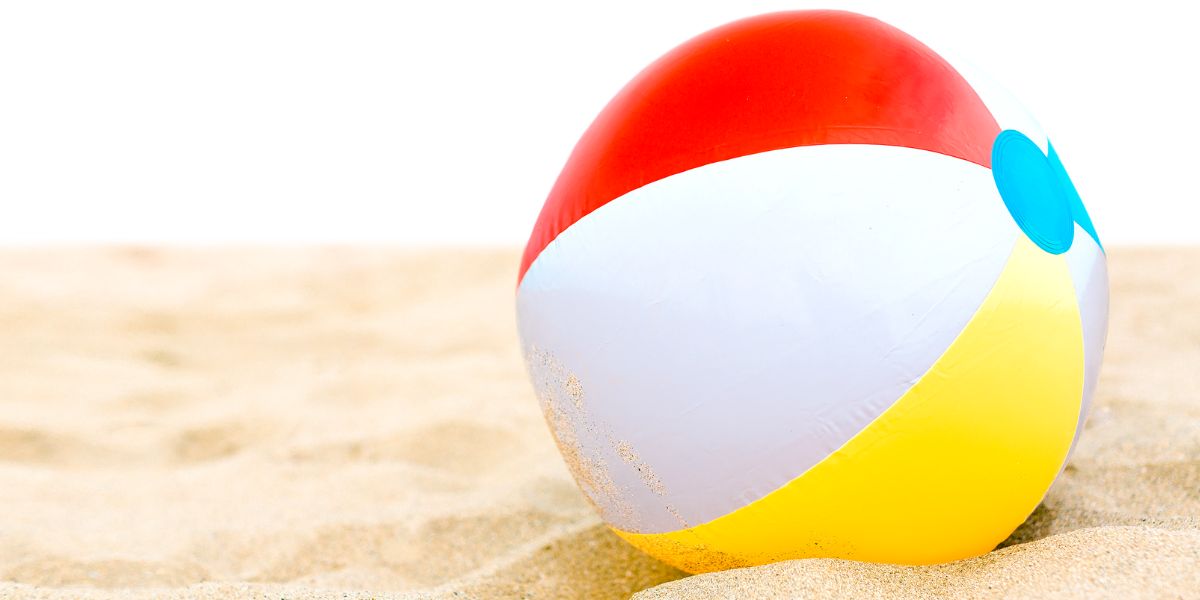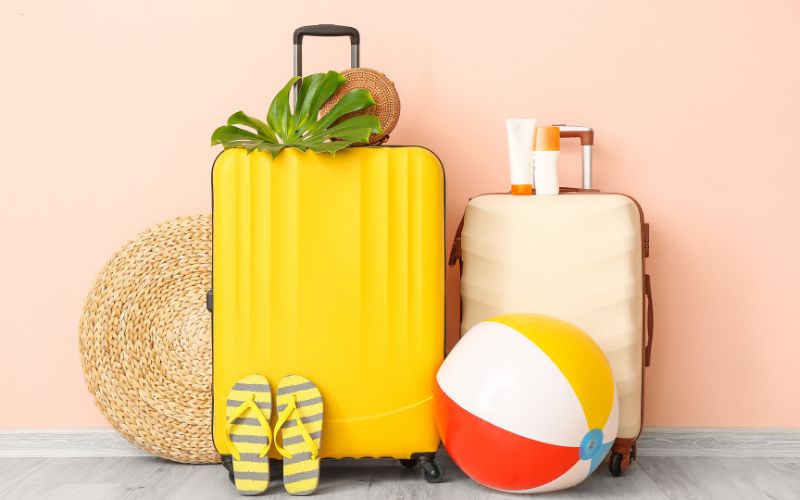If you’ve ever been on a rowdy flight, maybe on your way to Spring Break or a famous party destination, then you might’ve tried to bring a little bit of that party atmosphere on board with your own inflatables.

Or perhaps your child has a smaller inflatable ball that you’ve brought with you to keep them entertained – after all, a distracted child on a flight is much better than a crying child bothering the other passengers.
And the crew might have told you to deflate everything. But they aren’t just being boring, there’s a good reason for that. Inflatable balls like beach balls can pop on an airplane, which could be dangerous or at least not a very pleasant experience.
Want to know why? Let’s take a look.
Why would an inflatable ball pop on an airplane?
An inflatable ball will likely pop on an airplane due to the change in atmospheric pressure. The air surrounding the ball is a lower pressure, so the high pressure inside the ball can cause it to explode.
So, a little bit of science. When you inflate a ball, you’re adding air to it at the same pressure that it exists at ground level. Air pressure refers to the density of air molecules around you.
Air is always moving, so as you blow into a ball, you’re inflating it because the air molecules are pushing against the sides. The more air that you add, the faster the molecules are ricocheting off each other, hitting the sides more and forcing them to stay inflated.
Those molecules continue to move and bounce around, but there is equal pressure outside the ball – pushing against the sides from the outside. That’s why the ball stays solid.
Air pressure decreases the higher you are – there are fewer air molecules bouncing around, which is why it’s harder to breathe when you’re up a mountain.
But the air pressure stays the same inside your ball because it’s trapped inside. So that pressure is now pushing from the inside, while the force from the outside is massively reduced.
And so, if your ball is not strong enough to resist the air molecules inside, it will pop.
Aircraft generally cruise at somewhere between 33,000 and 42,000 feet, but that doesn’t mean you’re dealing with the same air pressure as you would be if you were outside at that height. If you were, then you would really struggle to breathe.
Instead, airplane cabins are pressurized to have an equivalent pressure of around 8,000 feet from ground level.
This is why your ears pop as the plane ascends, but also why you can at least still breathe on your flight.
And so some inflatable balls would survive the journey, but others would still pop due to the difference between the ground-level pressure inside, and the 8,000 feet altitude pressure outside the ball.

Do you have to deflate a ball when flying?
Most airlines don’t let you bring inflated items onto the aircraft. As well as the risk of them exploding during the flight, they can be cumbersome and also just a nuisance to other passengers.
You will normally be asked to deflate any inflatables you’re carrying with you, and store them in your carry-on luggage.
There may be some airlines that permit inflatables, particularly if they’re a chartered flight on their way to a party destination – after all, they want you to be in the right mood.
But they may ask that your inflatables are not inflated until you are in the air.
How can you prevent an inflatable ball from popping on an airplane?
If you followed the science above, you’ll know that the reason inflatables are likely to pop is that they have ground-level pressure inside them, and lower air pressure outside them.
So the easy solution is to just inflate the ball when you’re already at altitude.
That way, the air pressure inside the ball is the same as outside, and you shouldn’t have any problems with it popping. Just make sure your airline allows the inflatable first.
This only applies if you’re inflating it manually. Using a pump is creating pressurized air, and so you can still over-inflate it. But if you’re using your lungs, then the air pressure will be the same.
Just be aware that the lower pressure will likely mean the ball will not inflate to a taut level. It will likely retain some sponginess.
And it’s still a good idea to only use an inflatable ball with a thicker wall – cheap ones could pop regardless.

Final Thoughts
An inflatable ball is likely to pop on an airplane because of the difference in air pressure between the ball and the air pressure in the cabin. So if you try to carry an inflatable onto the flight, expect to be told to deflate it and put it away.
Don’t try to argue – you don’t want to get kicked off a flight over an inflatable ball. Just wait until you reach your destination and you’ll be able to use it.
